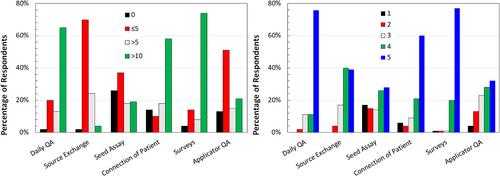A survey of medical physics residency program directors was conducted in Spring 2021 to examine the current state of brachytherapy (BT) training during residency. In this related work, a subsequent survey of therapeutic medical physics residents in 2022 was conducted to assess the confidence and experience of the trainees. Concerns for access to high-quality and diverse training in BT have escalated in importance due to recent declines in BT utilization.
A survey consisting of 26 questions was designed by a working unit of the Brachytherapy Subcommittee of the American Association of Physicists in Medicine (AAPM) and approved for distribution by the Executive Committee of the AAPM. The survey was distributed to current trainees and recent graduates of the Commission on Accreditation of Medical Physics Education Programs accredited therapeutic medical physics residency programs by the AAPM. The participant response was anonymously recorded in an online platform and subsequently analyzed using spreadsheet software.
The survey was distributed to 796 current medical physics residents or recent graduates over the course of 6 weeks in February and March of 2022. The survey received 736 views and a total of 182 responses were collected, with 165 respondents completing the survey in full. Among those responses, 110 had completed their residency training, with program start dates ranging from calendar years 2015 to 2021. Individual responses from the survey takers (including partial survey submissions) were evaluated and analyzed to compile results.
Medical physics residents reported the highest levels of confidence and caseload for gynecological BT procedures when compared with other surveyed treatment techniques. This indicates opportunities to improve training and increase access to clinical caseload are needed in order to improve competency and confidence. Time constraints (clinical and rotation-based) were indicated as impediments to BT proficiency. Medical physics residents reported enthusiasm for additional training opportunities in BT, and it is evident that additional structure and programs are required to ensure adequate access to BT training during residency.


